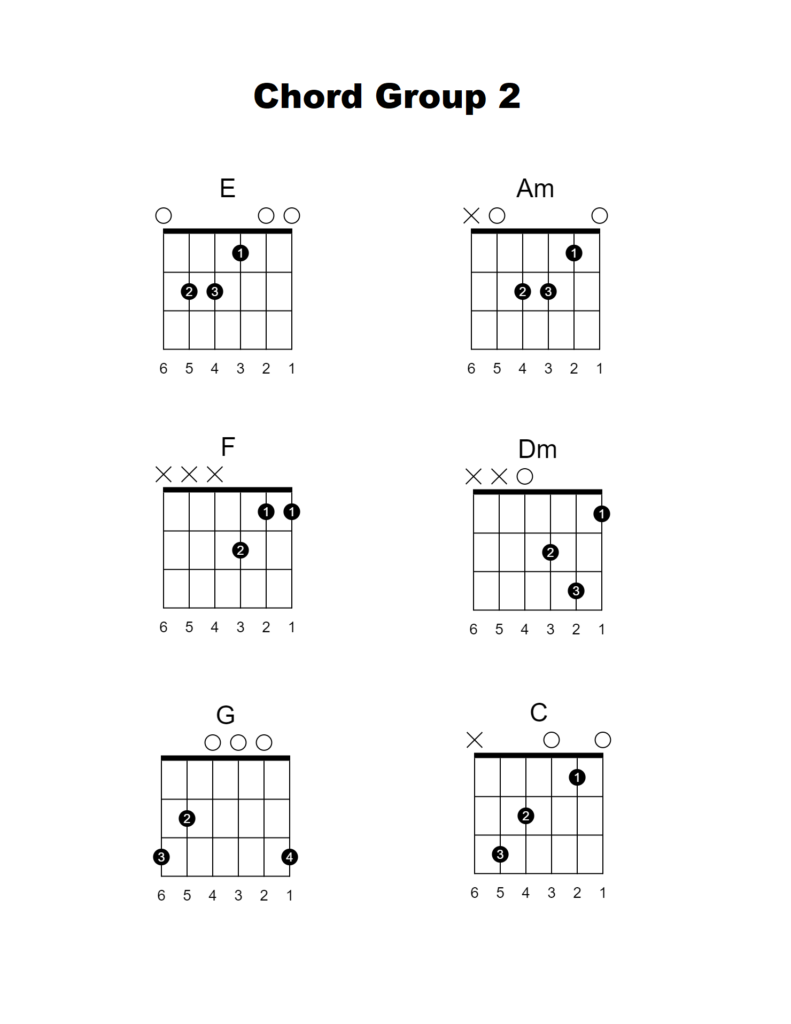The first row introduces the chords E major and A minor, which coincidentally have a similar finger shape/pattern. Notice that the E chord uses all six strings, while A minor excludes the sixth string.
The second row introduces the F chord, which will require a new left hand technique called a barré. This is where you depress more than one string with a single finger, in this case, you are covering both the first and second string on the first fret. Use your pointer finger and make sure you are applying a good amount of pressure for nice clear notes. Try the barré the first two strings first, and then try adding the third note with the middle finger. Note that this is also an important movable chord that we will be using in later lessons.
The third row introduces a new fingering for the G major chord, where the lowest note is played with the ring finger. This fingering is optimized for transitioning to the C major chord, and these two chords are very commonly found together.
When trying the C major chord, be sure to exclude the sixth string. (Notice that the sixth string is marked with an X.) You can avoid strumming that string altogether, or you can try muting the string with the tip or side of your ring finger. In this case, the ring finger would be serving a dual purpose of playing a note on the fifth string and also muting the sixth string.

Practice the following chord transition exercises for this group:
E to Am
F to Dm
G to C
[br]
And some longer chord progressions inspired by real songs:
Am to Dm to F to E (latin/spanish flavor)
G to F to C to G
C to F to C to G
[br][br]
